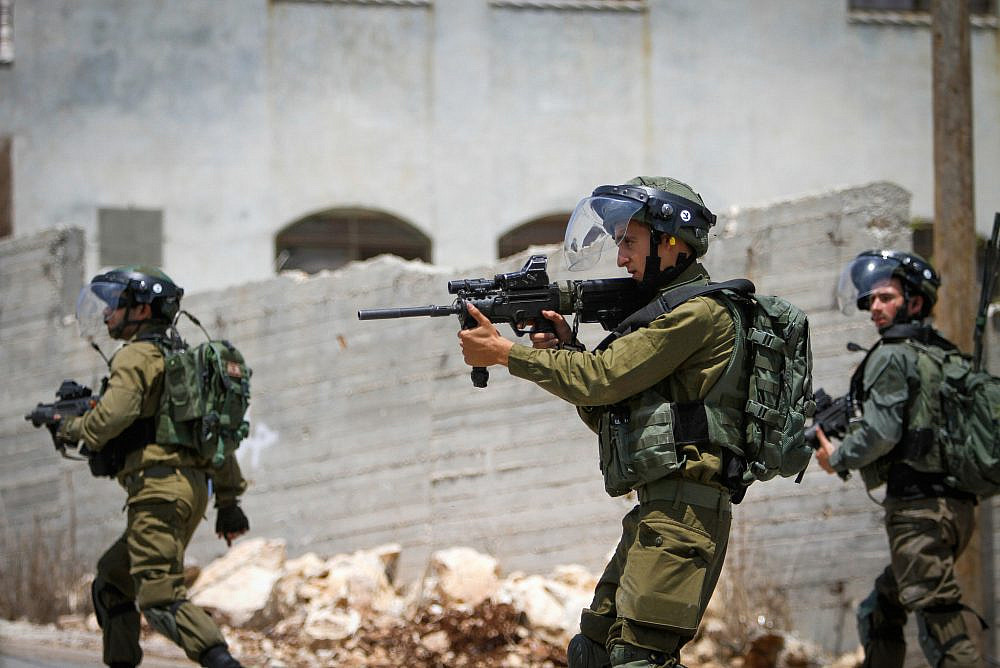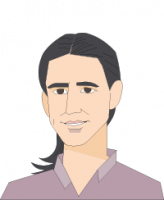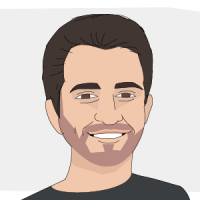Last Thursday, Israeli soldiers shot Muhammad Shtewi, 15, in the head with a rubber-coated steel bullet while he was spending time with friends at a public spring near Kufr Qaddum, a Palestinian village in the West Bank. The teen is now hospitalized at the intensive care unit of the Hadassah Medical Center in Ein Kerem.
Witnesses to the shooting, including people who accompanied Shtewi to the hospital, described a disturbing scene: not only did soldiers shoot Muhammad in the head while he was not engaged in any violent activity, but for 25 minutes, an Israeli police officer held up the car that was taking Shtewi to be treated. The teenager continued to bleed from the head, his arrival at the hospital delayed.
There had been no protest in Kufr Qaddum that day, according to residents, and it was unclear as to why the army showed up. Qusay Hussein, 13, recounts hanging out with Shtewi in Kufr Qaddum’s “park” — a grassy area with trees and flowers on the village outskirts.
“At around 3:20 p.m. we saw five Israeli soldiers approaching us from the hill by the park,” said Hussein. “We decided to leave and hide behind a rock because we were so scared. When my friend [Muhammad Shtewi] tried to see what was happening from behind the rock, the soldiers shot at us. We took [Muhammad] and ran to the village, and saw the soldiers photographing the blood stains left behind.”
The rubber-coated steel bullet that struck Shtewi is in fact a ball of metal covered with a thin plastic shell. According to the army’s open-fire regulations, troops can only aim these bullets at the lower part of the body. Experts explain that the bullet’s penetration through Shtewi’s skull suggests that it was fired from a relatively close distance — perhaps three or four meters (nine or 13 feet) away.
Mo’ayad Shtewi, 66, was in a different part of the park with his grandchildren when Muhammad was shot. “I was surprised to hear gunshots, as there weren’t any demonstrations on Thursday,” he said. He ran across the park and saw Muhammad lying on the ground, bleeding from his head.
Aws Amer, 30, who lives near the park, drove to the scene and, with Mo’ayad Shtewi’s help, lifted the wounded teen into the car before calling an ambulance.
Their plan had been to take Shtewi to a hospital in nearby Nablus, where he could be seen at a clinic specializing in head injuries. But a closed-off road en route — which has been off-limits since 2004 — meant that the 15-minute journey took 40 minutes instead.

As they neared the settlement of Karnei Shomron, a car with an Israeli license plates started tailing them. “I noticed a white car following us,” said Amer. “It didn’t seem to be a police car, except that he was following me while pointing a gun at me and signaling for me to pull over.”
After stopping the car, Amer and Mo’ayad Shtewi noticed that the white car’s driver was dressed in civilian clothing with a police vest on top. He asked them to follow him. “I felt all right about it as he was a police officer, not a settler. I thought he would take us to a clinic to deal with [Muhammad],” recalled Mo’ayad.
After a brief drive they arrived at the entrance to Karnei Shomron, where the police officer ordered them to stop. “I was covered in blood and didn’t have gloves,” Mo’ayad said. “I showed [the police officer] my hands and tried to explain, in part-Hebrew and part-Arabic, that we had someone who needed help.”
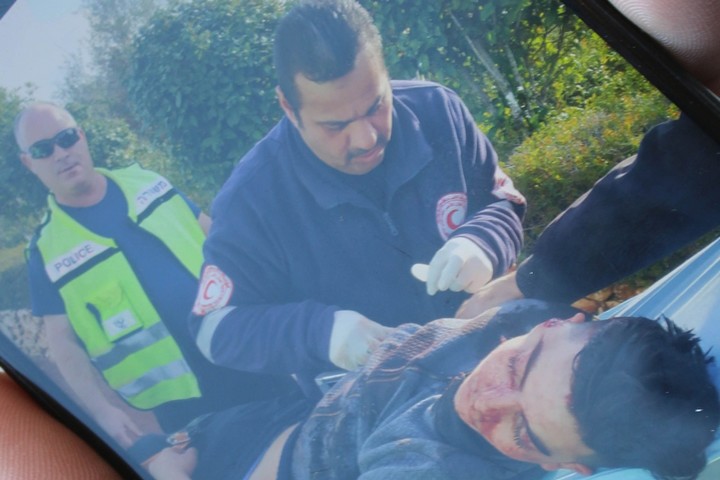
The police officer told them to wait. “If he’d offered us first aid I would have agreed,” Mo’ayad said. “But he didn’t. We tried to convince him to let us leave, but he wouldn’t.”
Settlers and soldiers gathered by the car, but no one offered to help. “They saw we had someone wounded with us, and that he could die any second,” Mo’ayad said. “As a nurse, I’ve never seen behavior like this. They had to help him, no matter how he’d been wounded, and no matter whether he was Jewish, Christian or Muslim.”
After waiting for 25 minutes, a Palestinian ambulance arrived. A photo from the scene shows the officer, standing a few meters away, observing the injured Muhammad lying on a stretcher.
Mo’ayad climbed into the ambulance while Amer followed in his car. “[The police officer] told me to stay behind after the ambulance had left so he could write me a traffic ticket,” Amer said. The NIS 250 fine was for Mo’ayad not wearing a seatbelt, because he was constantly turning around to check on Muhammad in the back seat. Amer said he tore up the ticket, threw it on the ground and drove back to Kufr Qaddum.
The ambulance carrying Muhammad arrived in Nablus at around 5:30 p.m., more than an hour-and-a-half after he had been shot. Later that night, he was transferred to Hadassah Medical Center in Ein Kerem.

On Tuesday, Muhammad underwent surgery to remove the bullet from the right hand side of his head. The following day, his father, Muhannad, seemed a little more optimistic. “I spoke to Muhammad and he didn’t answer, but when I squeezed his left hand he responded by moving his fingers,” he said.
Muhannad Shtewi heard about his son’s injury while he was in Ramallah. “At first they told me that he’d been hit in the leg so that I wouldn’t take it too badly,” he said. “The army hadn’t been in Kufr Qaddum that day. They come on Fridays and sometimes at night to arrest young people in their homes, but this is the first time they’ve entered like this. I have no idea, maybe because of the ‘deal of the century.’”
Asked for comment on the incident, the army responded: “During a disturbance, tires were set alight and stones were thrown at IDF forces who were at the scene. IDF soldiers responded by dispersing the protest. We are aware of the claim that a Palestinian was injured by a rubber bullet.”
Kufr Qaddum residents reject this version of events, stressing that no protest had taken place in the village that day.
Muhammad Shtewi is not the first minor to be shot in the head in Kufr Qaddum. In July 2019, Israeli soldiers fired at 10-year-old Abdul Rahman Shtewi while he stood at the entrance to a friend’s house during a Friday protest. Soldiers shot him with a .22-caliber live bullet from about 100 meters (328 feet) away, even though he was not involved in the demonstration or even in close proximity to it.
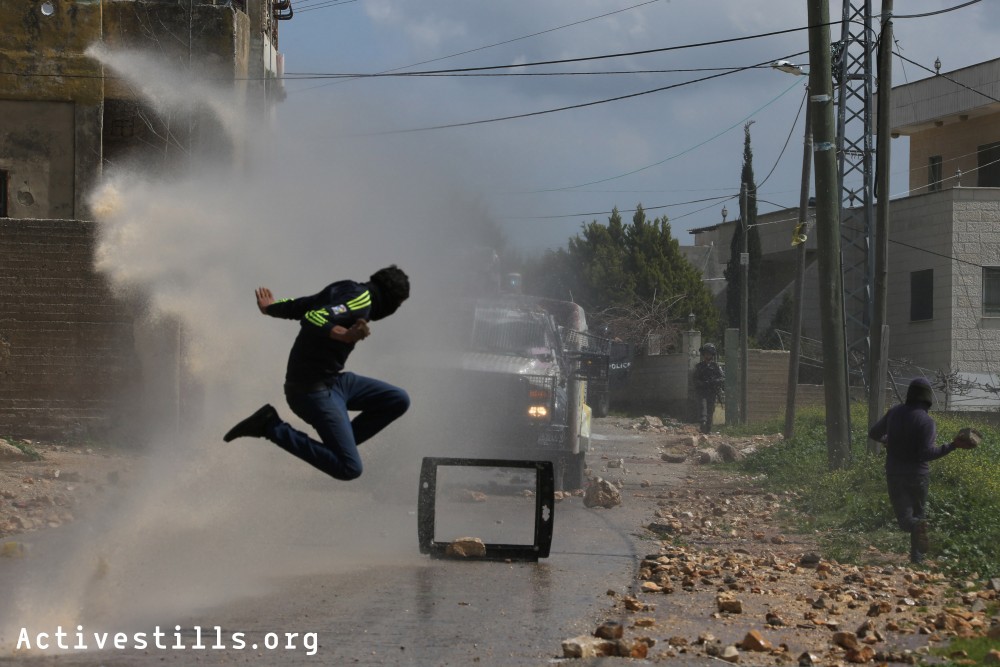
Kufr Qaddum has been in the headlines recently, following Israeli Defense Minister Naftali Bennett’s announcement that he would issue orders barring left-wing Israeli activists from participating in the West Bank.
The village is located in Area B, which is under Israeli security control and Palestinian administrative control. Most of its agricultural land, however, is in Area C, which is under full Israeli control. Around a sixth of its land is being used by the surrounding Israeli settlements, and almost half is off-limits to Kufr Qaddum’s residents, who need a military permit to access their own land. Part of the land is taken up by the Israeli settlement of Kedumim, which was expanded in 2003.
Kedumim’s expansion led to the blocking off of the main road connecting Kufr Qaddum to Nablus, the nearest West Bank city, which was partly responsible for Shtewi’s extended journey to the hospital. In 2011, residents launched popular protests demanding that the road be reopened; the demonstrations have occurred every Friday in the almost nine years since, often attended by Israeli and international activists. The protests are suppressed by the military, often violently.
Despite the photo showing an Israeli police officer standing near the wounded Muhammad, Israel Police said they looked into the matter, but did not find an incident matching the description. The police added that any further details on the incident would be assessed.
A version of this article was first published in Hebrew on Local Call. Read it here.

